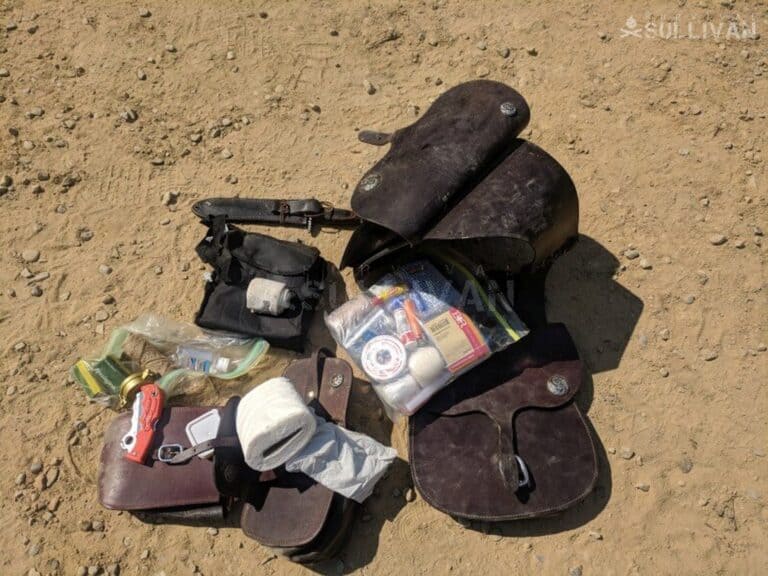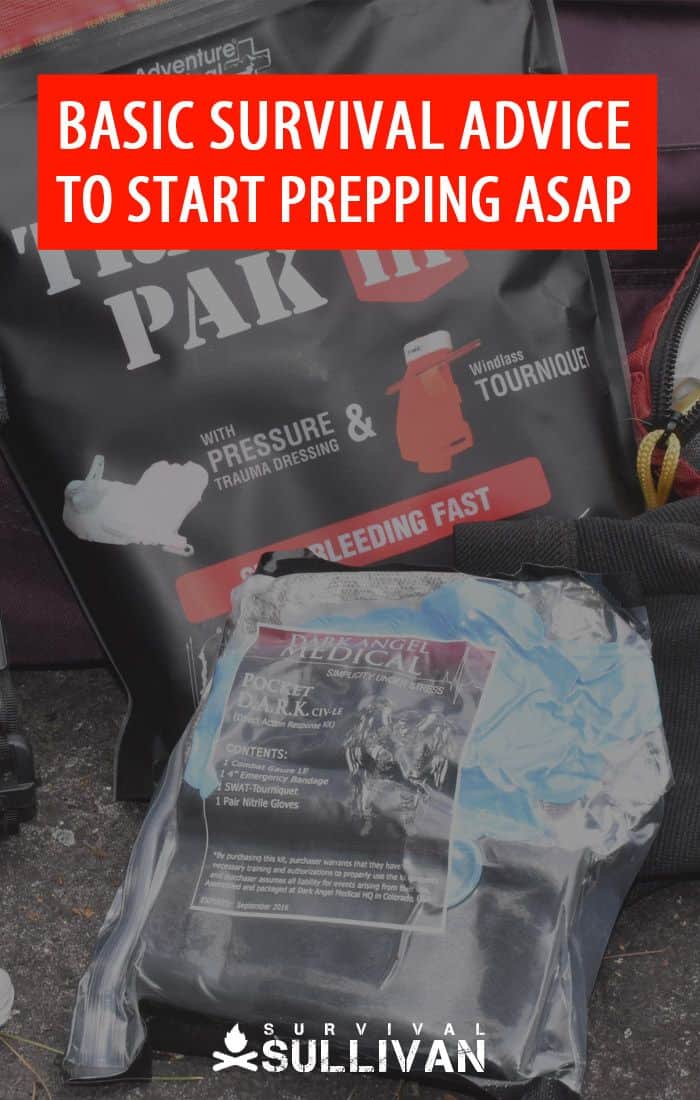When getting prepared, it is hard to imagine the actual havoc a disaster can wreak. it can be even tougher if you don’t know what scenarios to prep for. Survival information can be overwhelming so, the first impulse for many would be to go and buy a lot of things, such as backpacks and knifes.
Before you start prepping, it’s important to know the disasters that could affect you. In addition, disasters have this domino effect, meaning they can cause other disasters and emergencies.

Create Your Own Disaster Management Plan
If you live in an area prone to certain hazards you may want to sit down with your family and brainstorm a personal plan to mitigate the domino effect, or as researchers prefer to term it the cascade effect.
When working out your plan there are two approaches – the generic model where a group thinks of all the possible effects and how they link to the original disaster or the historic model where the team looks at an actual disaster and analyses how things could have been better handled.
Within your family there may be some old-timers who have lived through disasters and can contribute some valuable information.
You can use a pen and paper to help map out all possible cascade effects and what you can do to avoid being caught short.
Categories of Natural Hazards
Geological hazards would include earthquakes, tsunamis, landslides, volcanic eruptions, gas emissions and sinkholes. This video shows how the earthquake and tsunami in Japan unfolded.
Weather hazards could include tornadoes, hurricanes, floods, storms, mudslides or droughts.
Man-Made Disasters. Organizational or malicious hazards can create disasters.
Organizational hazards would be defects in design and procedures – for example gas flares or explosions, industrial fires, bridge or building collapse, dam bursts, sewer overflows or poor drainage leading to flooding.
In cities particularly flooding is more likely as the earth, which acts as a natural sponge for rainwater is covered over with asphalt and buildings, channeling water into drains that cannot cope with huge volumes dumped into them during storms.
Flooding can also result from human settlement in low-lying areas or on flood plains.
Malicious hazards could be deliberately set forest fires, terrorist bombings, sabotage of machinery at industrial or nuclear plants, chemical weapon attack, blowing up a dam, bridge, blocking roads during riots, blowing up roads and power stations to name but a few.
Malicious attacks are usually centered on crowded places where the most harm and chaos is likely to result as we have seen in recent terror attacks on nightclubs and marketplaces.
Technological hazards can result when technology lets us down resulting in fires, explosions, or toxic chemical release in liquid or gas form.
These may be linked to human error in that proper programming or maintenance was not correctly conducted. Sometimes metal fatigue or a malfunction in a system can be assigned as the cause, for example with aircraft crashes.
Developing a system to prepare for a disaster
Plan escape routes using pathways or little known roads as you can be sure the highways will be blocked with traffic. Make sure every member of the family knows these routes.
Point out areas of higher ground that family members should make for immediately in case of a flood and discus a place to meet – a disaster could strike while the family is at work and school.
Make sure they know to avoid routes passing factories that could emit toxic waste if affected by the disaster.
Make sure they have personal survival bags containing essentials that they can reach within seconds of a disaster.
Identify the source of the danger. Work out the most likely disasters: Are you living near a river that has a tendency to burst its banks; near a fault line where earthquakes are possible; in a tornado prone area, in an area affected by hurricanes, near nuclear reactors and so on?
Identify interdependencies. If for example a hurricane hits look at what other systems will be affected – low lying areas will be flooded, sewer lines could be affected and drinking water can be contaminated. Transport will be affected and food supplies may run out, as crops are washed away or contaminated.
Identify possible scenarios. Live power cables could be a source of danger in an earthquake; storm water drains could suck people down them or trap them against grates.
A collapsed building could shift further endangering rescue workers. An earthquake could be followed by a tsunami or a fire could result.
Should you become separated have a pre-arranged place to meet at well away from the disaster area, and a backup place should the first be compromised?
Assess the consequences and work on risk reduction. Children in South East Asia particularly are taught what to do in case of a tsunami and what to look for before it happens.
Wild animals had all escaped to the hills in the 2004 tsunami – if people had been more aware of the actions of wild birds and animals they would have known something was up.
Teach your children and other family members what to look out for and how to react.
Examples of knock on effects and what to do
Energy in short supply
Disclosure: This post has links to 3rd party websites, so I may get a commission if you buy through those links. Survival Sullivan is a participant in the Amazon Services LLC Associates Program. As an Amazon Associate, I earn from qualifying purchases. See my full disclosure for more.
When a power plant goes down people turn to alternative sources of energy. Before SHTF you should have most of the following:
- A portable generator with enough spare fuel to run for a couple of weeks at least.
- Gas appliances and spare gas bottles
- Plenty of wood, kindling, tinder and matches – and have a hatchet or an axe nearby so more wood can be cut.
- Torches – battery powered, rechargeable, kinetic, and solar – whatever type you feel answers your needs.
- Solar powered lighting with extra batteries.
- Blankets and warm clothes.
Water contamination
A flood, hurricane or earthquake disrupts power supply so often water pumps go down meaning no water in the taps even if the water pipes haven’t been damaged.
What to do
- Have enough water purification tablets to last a while as contamination leads to dysentery, typhoid and cholera.
- Make sure you have enough water supplies, as you probably won’t be able to buy bottled water. As many stores are built without natural lighting a dark store presents a security hazard so they close their doors. And even if they do stay open stocks of water will soon sell out
Transport disruption
Road closures and debris hamper disaster relief efforts from other areas. Vehicles involved in accidents are abandoned as people run for safety causing even more traffic congestion. People can’t be evacuated by plane when runways are damaged and helicopters are often hampered by weather conditions.
Sometimes when a cradle is lowered too many people try to hang on compromising the safety of the helicopter and its crew. People become angry at the slow pace of helicopter rescue, as in this video when floods hit the Kashmir district of India:
What to do
- Make sure the gas tank on your vehicle is always nearly full.
- Have a couple of extra cans stashed for emergency use – remember gas stations cannot pump fuel without electricity, and if they do everyone else will be wanting to fill up their cars causing congestion. You want to get away as quickly as possible.
- Have an alternative mode of transport – motorbikes on a trailer or bicycles on bike racks attached to the vehicle so if you are forced to abandon the vehicle because of road closures you can continue to bug out.
- Alternative transport should be suited to the time of year – winter survival means snowshoes, skis and ski poles, a snowmobile.
- If you live in an area prone to slow flooding then a boat or various other inflatables may help if they are anchored to something solid. Prepare your craft in advance and make sure the motors are running well and you have sufficient fuel.
Introduction of martial law.
When a huge disaster strikes, martial law is sometimes introduced to try and keep people in check as many will loot, steal, and murder to get what they need to survive or just through sheer greed. This video shows how people react:
What to do
- Make sure your weapons are safely concealed and that you have enough ammo in dry storage containers should you need to defend yourself.
- Make sure that your bug out location as well as your bug in location are secure.
- If bugging in, make sure you have secured all doors and windows against attacks when crowds run amok.
- Going out into the streets may be dangerous so stockpile as much food and gear as possible.
- Avoid going out to “take a look”. Sit tight and listen to the news.
- Make sure you have an emergency radio so you know what is happening – don’t rely on your cell phone as you probably won’t have anywhere to charge it and there probably won’t be coverage if systems have gone down.
Lack of medical attention
Often in disasters triage (deciding the order of treatment of a large number of patients or casualties based on their wounds) may take place. Ambulances often won’t be able to get through to take people to hospitals.
What to do
- Stock up on medicine and dressings as hospitals and clinics will be overwhelmed and you may not be able to reach them quickly.
- Make sure you know enough first aid to take appropriate action – simple suturing skills can save a life.
- If a member of your family is seriously wounded you don’t want them to be last on the list for attention – so do what you can to ease their condition with a tourniquet or splint, pressure pads to stop blood flow etc.
- If a family member is on chronic medication make sure they have at least two months supply at all times – in a disaster pharmacies may not be open, then when shops open most medicines will sell out as the transport vehicles with replenishments can’t get through.
Cash not available
When the power goes so do the ATMs and the facilities to pay by credit/debit card. Banks will have a run on cash – sometimes they may not have enough cash held in reserve to honor requests – and the cash in transit vehicles may not be able to get through for days.
What to do
- Always have quite a bit stored in safe yet accessible places (never all in one place) for emergencies.
- Have some cash hidden at your bug out location – again never all in one place.
- Keep small denomination bills to pay for necessities/services – never flaunt large amounts.
- Keep your bankcards with you, as ATMs further from the disaster area may not be affected.
Mob violence
This is when cities are at their most vulnerable as large numbers of people can’t find alternative accommodation and force their way into places for shelter.
High-rise building with stairwells become dangerous as thugs lurk ready to pounce on the weaker members of the community.
Some people use disasters as an opportunity to enrich themselves at the expense of others as in the Haiti disasters and recent looting events in the US.
What to do
- Stays put and avoid leaving your location.
- Spend your time making sure your bug in or bug out location is well defended.
- Practice your self-defence moves
- If going outside carry a concealed weapon – if it is obvious you are carrying this may provoke an attack – and only use your weapon if you absolutely have to. Rather show them a clean pair of heels if there is a chance to make a run for it.
- Goods can be replaced, people can’t – concentrate on keeping your family safe rather than defending your goods.
Economic and political turmoil
People lose homes, vehicles and other household possessions and there is a cost to replacing all these. You may be injured and require costly medical attention so make sure your medical aid and insurance policies provide adequate coverage.
Environmental effects
This slideshow by Chrissie Williams, shown at the 7th Annual Australasian Natural Hazards Management Conference indicates how the natural environment can be affected .
Perhaps the effect on the environment is the one that is most important as we rely on the earth for our food and water supplies as well as many medicinal plants.
What to do
- Streams may carry contamination a long distance. Sewage effluent can cause a spike in E. coli – potentially fatal if ingested so never drink untreated water.
- Topsoil may be stripped from your garden through flooding, or your yard may be buried under rubble and dust if there was an explosion or earthquake. It is going to take time to put things right so you will need to access food in areas unaffected by the disaster and for this you will need cash to buy what is brought in or transport to go out and forage in safe areas.
- Filter feeders, like mussels and clams, may be affected by major flooding and contamination, so avoid harvesting these until the contamination has cleared.
- Make sure you are always stocked up with sufficient food supplies to last at least a month until things get back to normal.
- Keep dried medicinal herbs and tinctures ready for use.
Hopefully the advice given here is enough to motivate you to start prepping right now. You don’t have to spend a lot of money, you just have to think about what could happen, and take baby steps to be prepared for it.
Of course, buying gear is essential, so we made a separate list of the top 10 things to get here.


Traveler, photographer, writer. I’m eternally curious, in love with the natural world. How people can survive in harmony with nature has fueled my food safety and survival gardening practices.
At the age of 12, I found a newspaper advertisement for a 155-acre farm at a really good price and showed my parents one Sunday morning. They bought it and I happily started planting vegetables, peanuts, maize and keeping bees with the help of the local labor.
Once I married wherever we moved it was all about planting food, keeping chickens and ducks, permaculture and creating micro-climates. I learned how to build wooden cabins and outdoor furniture from pallets, and baked and cooked home-grown produce, developing recipes as I went along.
